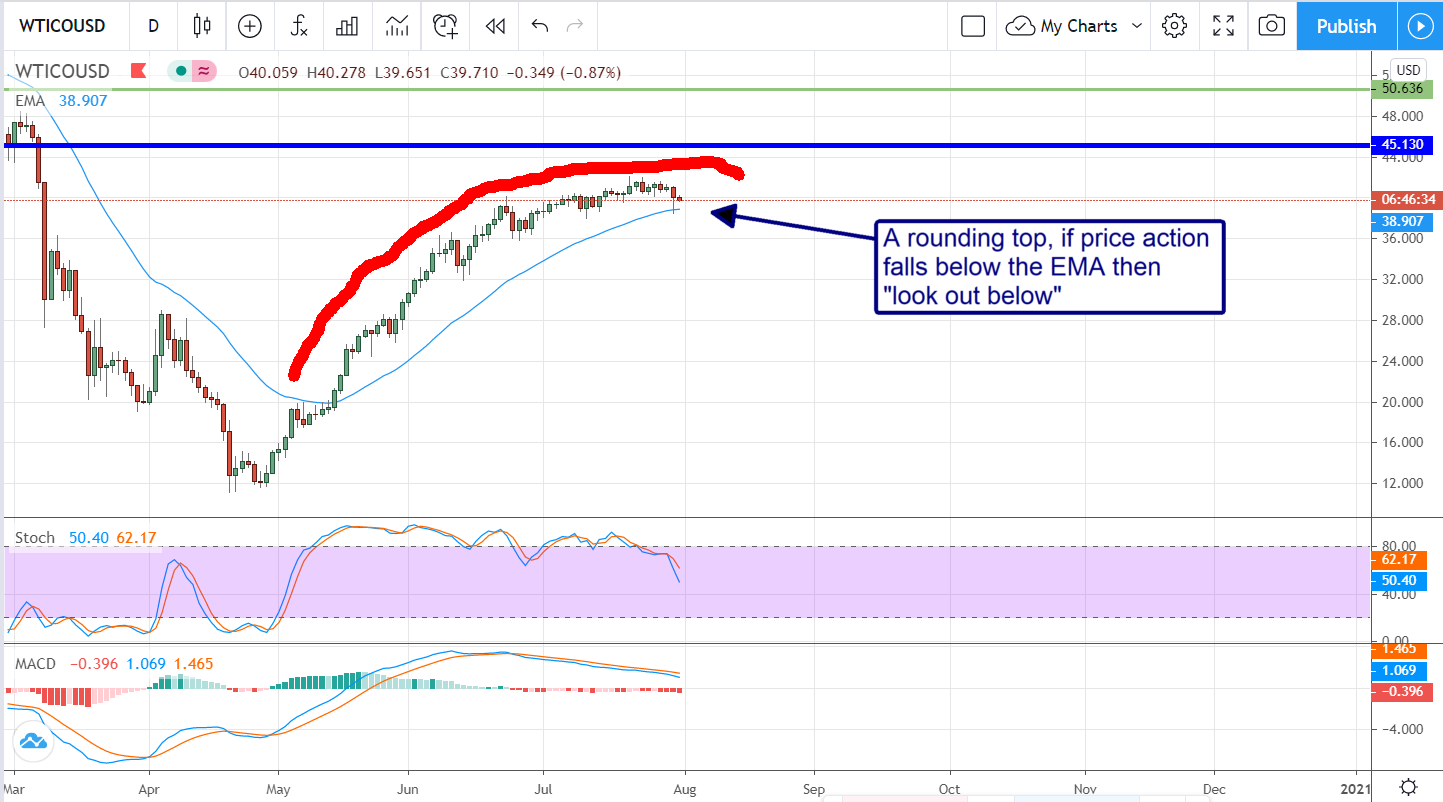Oil Is About To Tank: Don’t Be Long When It Does
A Rounding Top In Action
I wrote about oil a few weeks ago describing a Rounding Top that I see in play. In the time since the price of oil has continued to edge higher and still showing the same signs of weakness. The move is a combination of near-term demand increases driven by the global economic recovery coupled with fundamental, catastrophic, oversupply. What this means is that smart oil magnates are letting oil out by dribs and drabs, artificially inflating prices, until they collapse under their own weight.
The fundamental fact about oil that traders need to understand is that we have a lot of it. Storage is still trending at record highs, ships are full of oil just sitting out in the middle of ocean, and the worst part is that capacity, our ability to pump more, is the problem. Anytime supply begins to dwindle we can easily turn the pumps back on and get some more.
On a technical basis, there are some serious red flags that traders need to pay attention to. The number is that, while prices have been trending higher, both the indicators I track have turned bearish. That is a glaring divergence from prices that not only shows weakness in the market, but also that the bears are really in control. Add to this the fact that price action is angling away from the most obvious resistance target well below that target and the stage is set for some serious downside.
Regarding the candles, the most recent price action shows a nice little maribuzo candle moving down to set a nearly one-month low. The low found support at the short-term moving average but don’t trust it. That support will evaporate at the drop of a news-bite and then where will price action be? Heading lower with a chance of touching $36, $34, and $32 as it does so. Based on the metrics, even assuming the economic rebound continues, oil prices are more likely to retest $24 than cross $44.
As an investment, oil is dead. There is little reason to think any oil company will be able to make profits without seriously curtailing CAPEX and cutting costs. What this means is production capacity, which is already in decline, will continue to fall. At some point in the future the market will rebalance in a meaningful way but that is still a long way off. Until then expect high prices to result in low prices as producers take the opportunity to lock in profits.
